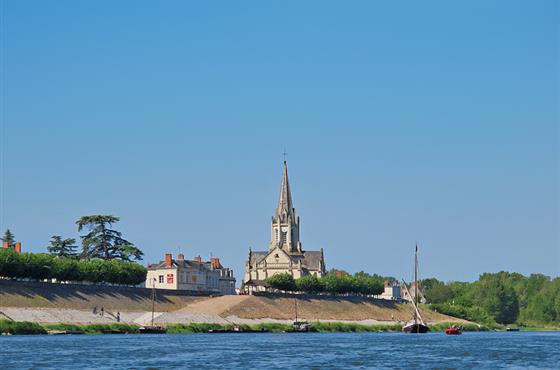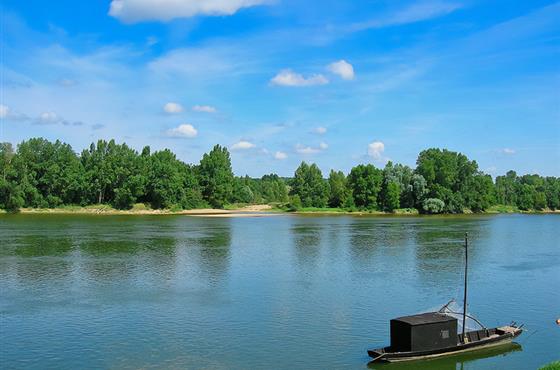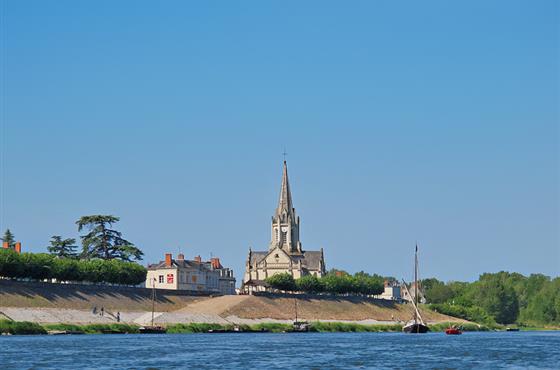The port, hemp and a very long history...
The village's entire personality is embodied by its setting and landscapes bound to the soils and the river. The village community gradually expanded as the levees (turcies) were built in the 11th century, protecting people and crops.
The landscapes
The hamlets feature in a wide variety of different compositions. Landscapes are expansive, both towards the Loire and the Forest of Chinon. Vast wooded islands have been sculpted by the River Loire, although the river plays little part in the economic activity of the area. Nevertheless, there is a single, magnificent paved port with two access ramps facing each other.
The presence of the cabin boat belonging to the last professional fisherman is a reminder of salmon and shad fishing, an activity which was intensively carried out here not so long ago.
The church
Of recent construction (1843), it is remarkable for its aspect (the choir faces west), its magnificent stained glass window representing St Martin, and its vaulted wooden ceiling in the shape of a boat.
Crops
The names of the settlements recall a forest that has long since disappeared. The floodplains of the Loire formed veritable forest galleries. For a long time, the wettest soils were dedicated to livestock rearing and Bréhémont was famed for its milk production (this is where Rabelais sent someone to fetch milk for Gargantua's bottles!). Hemp growing was associated with this area: retting ditches (where the hemp was left to soften) remain to this day, and one can still see the stones used as ballast for the bundles in the water (near the hamlet of Rupuanne). This was the dominant crop in the 19th century: nearly the whole of the cultivable area was devoted to hemp (554 tonnes per year) and canal boats docked in the port to collect their cargoes of rope. In 1942, around one hundred hectares of hemp were still being grown. This ended in 1969, although production continued on a small scale for a dozen more years for the manufacture of paper pulp.
The population of the area fell significantly as a result of flooding, especially in 1856. Lower levels of river traffic, the decline of the river boat industry and the end of hemp production also played a part. Today, mixed farming and arboriculture are the most important activities.
Living environment
Today, visitors will find a perfectly preserved living environment with a charming personality, consisting of low houses huddled into hamlets quite close together along the levees. Hemp ovens can still be seen, often adjoining the farms, evidence of a time when Bréhémont was the hemp capital. Close to the 19th century port's monumental docks, one can still see the superb houses of the Master-Bargemen, and the presence of the last two remaining "pissotières" (open-air urinals) [1872] proves the importance of river transport to Bréhémont…
more details: here






